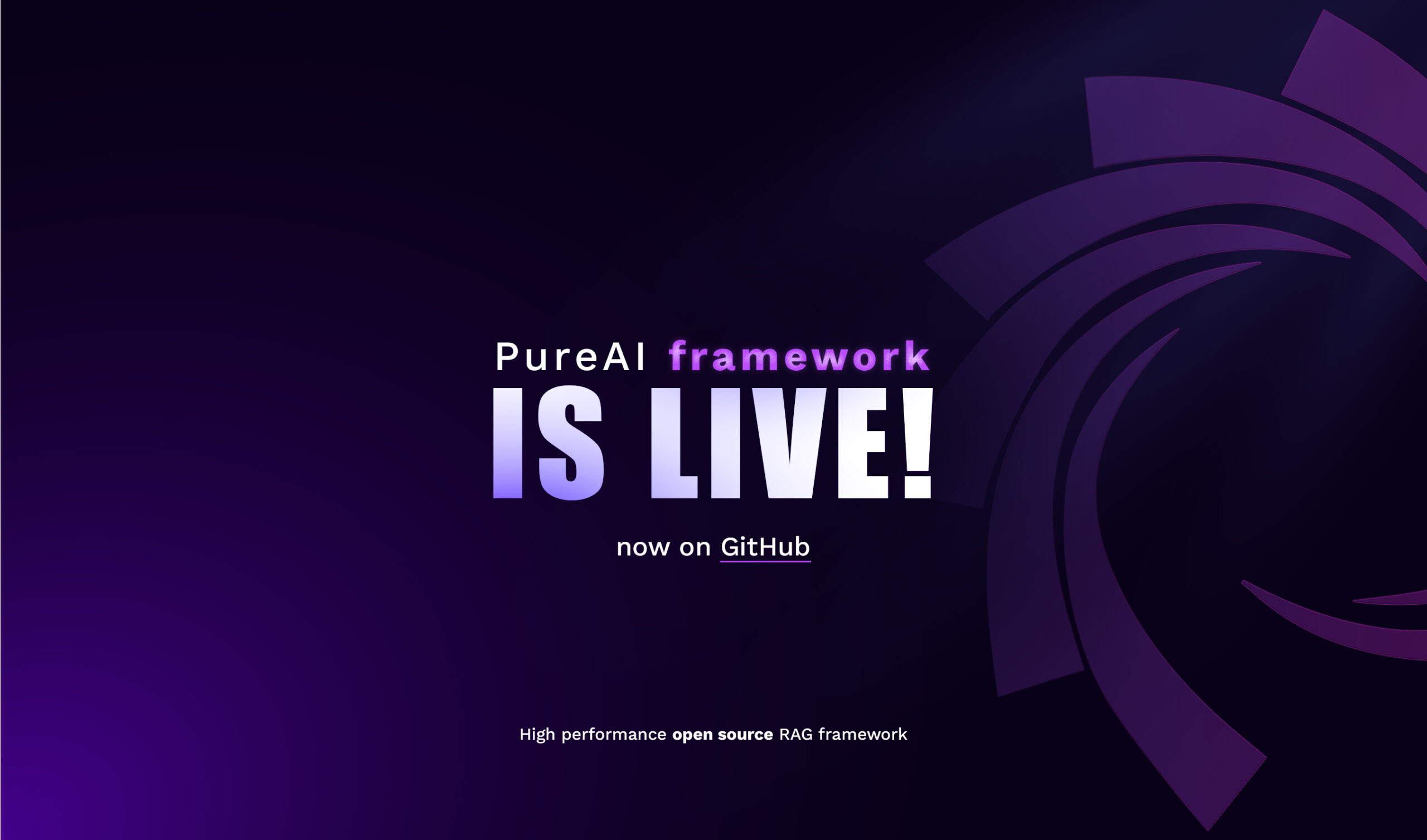The Hidden Cost of RAG: Why Optimization is Essential for Scalable AI

- AI Infrastructure, Developer Tools, Machine Learning, Open Source, Technical Deep Dives
Retrieval-Augmented Generation (RAG) has emerged as a game-changing architecture for boosting the performance and accuracy of Large Language Models (LLMs). By enriching queries with external data, RAG improves contextual relevance and factual correctness. But while RAG strengthens output quality, it also introduces significant architectural challenges that are often overlooked.
Without proper optimization, implementing RAG can lead to serious performance and cost issues. From slow vector retrieval to excessive infrastructure consumption, many AI teams quickly realize that RAG pipelines are far from “plug-and-play.”
In this post, we explore the real-world bottlenecks of scaling RAG systems—and how our open-source framework, PureCPP, is built to solve them.
The Problem: When RAG Becomes a Bottleneck
At its core, RAG combines indexing, retrieval, and generation into a single pipeline. While powerful, this architecture demands a balance of speed, accuracy, and efficiency. When left unoptimized, RAG often suffers from:
- High indexing and storage costs
- Retrieval latency that slows down responses
- Excessive GPU and CPU usage, straining budgets and infrastructure
These issues grow exponentially with scale, making enterprise-level deployments costly and unpredictable.
Indexing & Storage: The Tradeoffs
Where and how you store your vector indexes plays a major role in performance:
- Disk-based indexes are affordable but slow.
- RAM-based indexes are fast but expensive.
- Cloud-based indexes offer scalability but introduce network latency.
Many existing RAG frameworks overlook these tradeoffs, leading to inefficient memory use and inflated infrastructure bills.
PureCPP Takes a different approach: it gives developers full control over how and where indexes are managed, optimizing memory use without compromising speed.
CPU vs. GPU: Smarter Resource Allocation
A common misconception is that GPUs should handle every step of the AI workflow. While GPUs shine in model inference, retrieval is a different story:
- GPU: Ideal for high-speed token generation
- CPU: Better suited for large-scale retrieval operations
PureCPP is designed with this in mind. It supports both CPU and GPU-based pipelines, intelligently routing tasks for the best performance-to-cost ratio.
Efficiency at Scale: Reducing Latency Without Sacrificing Accuracy
LLMs are computationally expensive. Adding a RAG layer can easily double inference costs. PureCPP addresses this with key performance features:
- Asynchronous retrieval to eliminate bottlenecks
- Prefetching & caching to avoid repeated data access
- Smart chunking and embedding optimization to reduce unnecessary compute
These enhancements keep your pipelines responsive even as your dataset or user base grows.
PureCPP: A Scalable Foundation for Modern RAG
If you’re building AI solutions at scale, optimization isn’t a nice to have, it’s essential. PureCPP delivers:
- Efficient memory and hardware usage
- Modular multi-model integration
- Real-time routing and observability tools
Built in C++ with Python bindings, PureCPP offers performance at its core while remaining developer-friendly.
Try It Now on GitHub

Be part of our community
Follow us on our social media or direct channels like our Discord server!